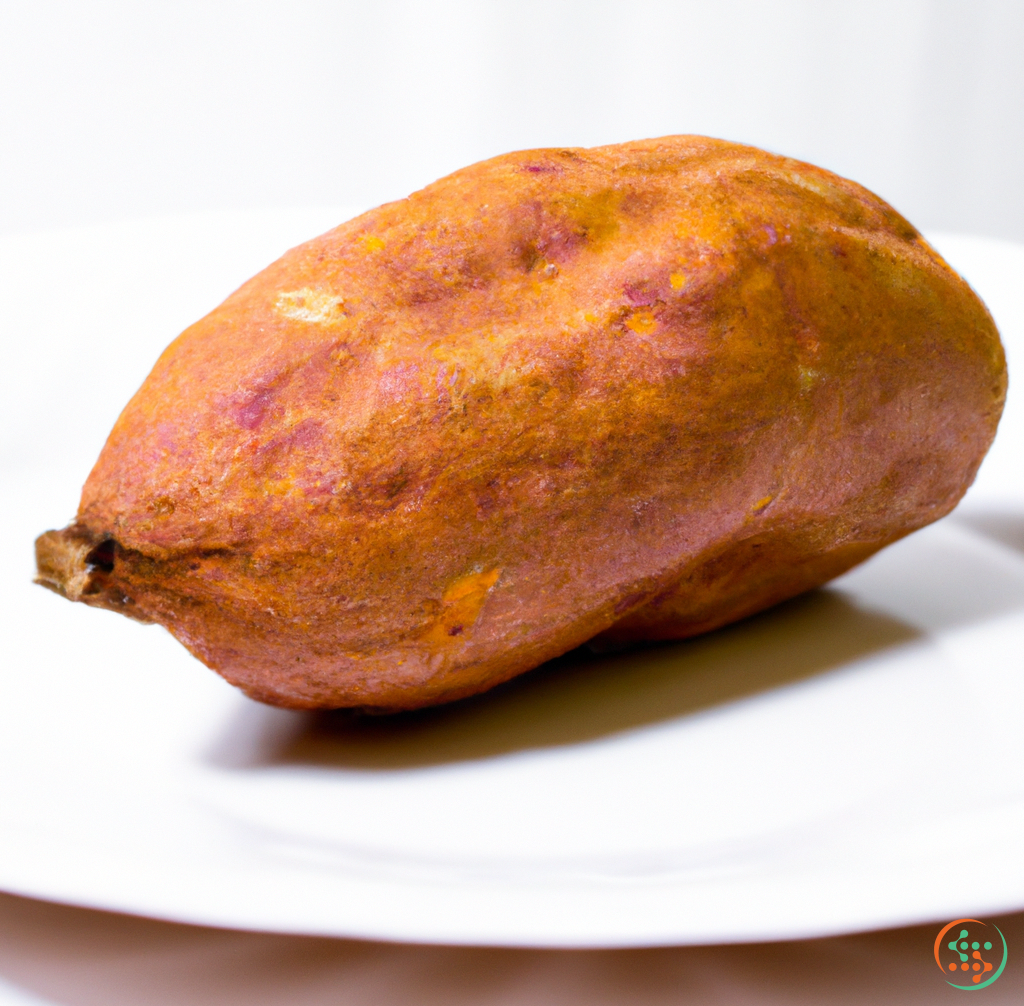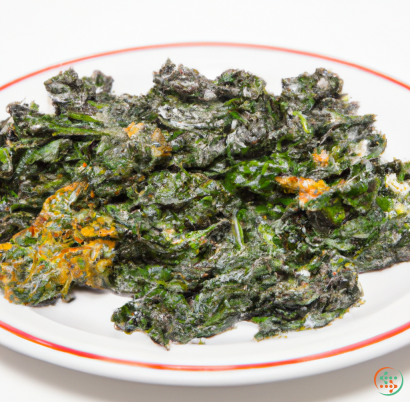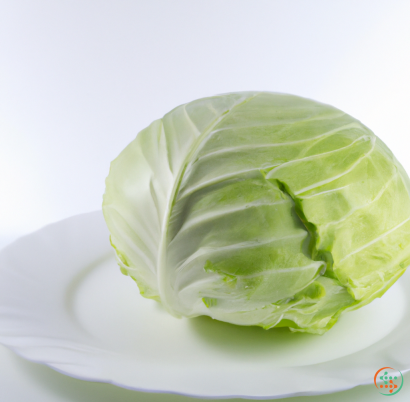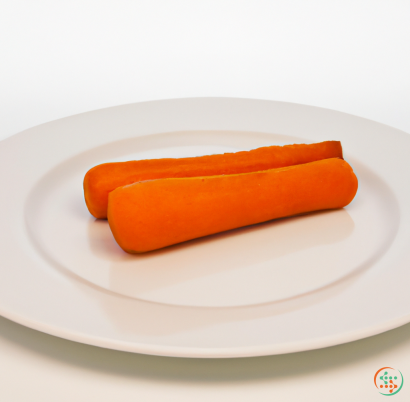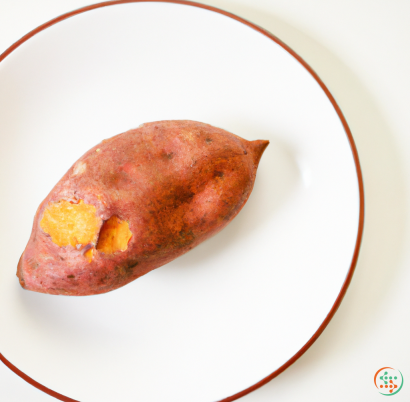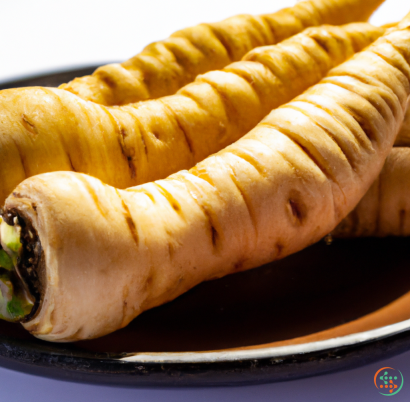Raw Sweet Potato
A Raw Sweet Potato–A Delicious, Nutritious and Versatile Superfood
If you ask most people which vegetable is a nutritious, delicious and versatile superfood, chances are, the sweet potato is not going to come to mind. But this root vegetable is packed full of vital vitamins, minerals and antioxidants, and is an excellent source of dietary fibers. The best, and healthiest way to get the most out of a sweet potato is to consume it in a raw form. This article will explore the many health benefits of eating a raw sweet potato, along with some tips on how to prepare and store them.
The Nutrition in a Raw Sweet Potato
A raw sweet potato is an excellent source of dietary fiber, which can help decrease cholesterol levels, regulate blood sugar and insulin levels, and promote healthy gut bacteria. It is also an excellent source of antioxidants, as well as vitamins A and C which aid in preventing cell damage and fighting off infections.
Sweet potatoes are also a good source of complex carbohydrates, providing sustained energy throughout the day. Furthermore, sweet potatoes contain magnesium, potassium, manganese, beta-carotene, calcium, iron, and zinc. In addition to being rich in antioxidants, sweet potatoes are a low-glycemic food and contain a variety of anti-inflammatory compounds.
The Health Benefits of Eating a Raw Sweet Potato
Eating a raw sweet potato has a number of health benefits. The dietary fiber content helps keep cholesterol levels in check, while the antioxidants may help protect against cancer and other illnesses. The high levels of vitamin A found in a raw sweet potato may also help protect against vision problems, while the beta-carotene content may help reduce signs of aging.
In addition, the high levels of B vitamins may help boost the immune system and improve digestion. Finally, the glucose content of a raw sweet potato can help stabilize blood sugar levels and provide sustained energy.
How to Prepare and Store a Raw Sweet Potato
The best way to prepare a raw sweet potato is to wash it under cold running water, then dry it thoroughly. It is then ready to be peeled or grated into dishes such as smoothies, salads and soups. You can also grate the entire sweet potato and refrigerate it for up to 3 days and use it in baking, stir-fries and even baking.
When storing sweet potatoes, make sure to keep them in a cool, dark and dry place and keep them away from direct sunlight. Storing them in the fridge is not recommended, as this will cause them to lose their nutrients. When purchasing sweet potatoes, choose ones which are firm and free from blemishes and wilting.
Conclusion
A raw sweet potato is a delicious, nutritious and versatile superfood providing a range of health benefits. It is an excellent source of dietary fiber, antioxidants, vitamins A and C, magnesium, potassium, iron, zinc, and beta-carotene. Eating a raw sweet potato can help promote healthy cholesterol levels, reduce signs of aging and improve blood sugar balance, as well as boost the immune system and improve digestion.
When preparing a raw sweet potato, make sure to clean it thoroughly and dry it off before peeling or grating it. Store it in a cool, dark and dry place, as refrigerating it can cause it to lose its nutrients. When buying sweet potatoes, opt for ones which are firm and free of blemishes and wilting.
In conclusion, eating a raw sweet potato is an excellent way to get the most nutritional benefits out of this delicious and versatile vegetable. So why not give it a try and add it to your daily diet?
The Journey of a Raw Sweet Potato from Farm to Plate
The raw sweet potato is a nutritious and delicious root vegetable which is found in meals around the world. It has a distinct, sweet flavor and a firm, slightly starchy texture when cooked. In this blog post we'll take you through a detailed journey of the raw sweet potato, from farm to plate. We'll look at the farming process and the harvesting of the potato, its shipping and transportation, the packaging and warehousing, and finally its arrival on your dinner plate.
Farming the Sweet Potato
Sweet potatoes are warm season plants and are typically planted in temperate regions during late spring. When broken into pieces, each piece can produce a new sweet potato plant. Before sowing, the soil must be tilled and prepared to ensure it is loose and fertile. Before sowing the pieces of potato onto the soil, farmers must ensure there are two inches between each piece to allow for adequate space for the root system to expand. This process of planting sweet potatoes is also known as “hilling.”
Once the sweet potatoes are sown, the plants need to stay warm and moist. Frequent watering is necessary to ensure the developing roots and tubers remain healthy. After 8-10 weeks, the vines become noticeably dry which indicates the potato is ready to harvest. Farmers then use a combination of hoes, spades, and other hand tools to unearth the sweet potatoes.
Harvesting the Sweet Potato
When the sweet potatoes have been unearthed, they must then be sorted according to size. The smaller and more uniform the potatoes, the better their taste and texture when cooked. If a potato is too big, it will be difficult to cook it evenly. Care must also be taken to separate potatoes that are damaged, such as through frost or disease, from the healthy sweet potatoes.
After the potatoes are sorted, they must be cured. During this process, the sweet potatoes are left to heal for 10-14 days in a warm, humid environment. This helps reduce any bruising or injuries which may have occurred during the harvesting process. After curing, the sweet potatoes can then be graded according to size - typically small, medium, large, and jumbo - and are placed in a light cloth bag to keep them insulated.
Shipping and Transportation
Once the sweet potatoes have been sorted, they can be shipped and transported to their ultimate destination. Sweet potatoes are typically shipped in climate-controlled, refrigerated trucks in order to keep them at the optimal humidity and temperature. This helps prevent the sweet potatoes from spoiling during the long transport.
When the sweet potatoes reach their destination, they must then be inspected, sorted, and stored. Inspectors use a combination of visual checks, refractometers, and electronic sorting machines to identify any sweet potatoes which are defective and must be discarded. The potatoes that pass the quality check will then be sorted into various sections according to their size, flavor, and texture.
Packaging and Warehousing
Once the sweet potatoes have been sorted and inspected, they can then be packaged and stored in a climate-controlled warehouse. The temperature and humidity levels of the warehouse must be carefully monitored to ensure the potatoes do not spoil. Packaging plays an important role in keeping the sweet potatoes fresh, as different types of packaging materials can help extend the shelf life of the potato. Cardboard boxes and plastic bags are typically used to package the sweet potatoes.
The tiny air bubbles which are present in the plastic bags act as a cushion and help preserve the sweetness. The cardboard boxes, on the other hand, keep the potatoes safe during their journey to their final destination. Once the sweet potatoes have been given a quality seal, they are then ready to be shipped to retailers and restaurants.
Arrival On The Dinner Plate
When the sweet potatoes arrive at their final destination, they must then be prepped and cooked. This can involve peeling and cutting the potatoes, boiling or roasting them, and then mashing or pureeing the vegetables before serving. The sweet potato can then be incorporated into a variety of dishes, including soups, stews, curries, casseroles, and even desserts.
The final result of the long journey is a delicious and nutritious meal, which is enjoyed by people around the world. Sweet potatoes are a great source of fiber, vitamin A, and other essential vitamins and minerals. They can also help promote a healthy digestive system, improve heart health, and even boost the immune system.
Conclusion
As you can see, the journey of a raw sweet potato from farm to plate is quite extensive. From planting, harvesting, shipping, and packaging, the stage is then set for a delicious dish on your dinner plate. Not only is the sweet potato a nutritious food item, but it is also highly versatile and can be used in a variety of dishes.
| Vitamin A | 0.709 mg | |
| Beta-Carotene | 0.008509 grams | |
| Alpha-Carotene | 0.007 mg | |
| Vitamin E | 0.26 mg | |
| Vitamin K | 0.0018 mg | |
| Vitamin C | 0.0024 grams | |
| Vitamin B1 | 0.08 mg | |
| Vitamin B2 | 0.06 mg | |
| Vitamin B3 | 0.56 mg | |
| Vitamin B4 | 0.0123 grams | |
| Vitamin B5 | 0.8 mg | |
| Vitamin B6 | 0.21 mg | |
| Vitamin B9 | 0.011 mg |
| Calcium | 0.03 grams |
Daily Value 1.3 g
|
| Iron | 0.61 mg |
Daily Value 0.018 g
|
| Magnesium | 0.025 grams |
Daily Value 0.4 g
|
| Phosphorus | 0.047 grams |
Daily Value 1.25 g
|
| Potassium | 0.337 grams |
Daily Value 4.7 g
|
| Sodium | 0.055 grams |
Daily Value 2.3 g
|
| Zinc | 0.3 mg |
Daily Value 0.011 g
|
| Copper | 0.15 mg |
Daily Value 0.9 mg
|
| Manganese | 0.26 mg |
Daily Value 0.0023 g
|
| Selenium | 0.6 ug |
Daily Value 0.055 mg
|
| Tryptophan | 0.031 grams | |
| Threonine | 0.083 grams | |
| Isoleucine | 0.055 grams | |
| Leucine | 0.092 grams | |
| Lysine | 0.066 grams | |
| Methionine | 0.029 grams | |
| Cystine | 0.022 grams | |
| Phenylalanine | 0.089 grams | |
| Tyrosine | 0.034 grams | |
| Valine | 0.086 grams | |
| Arginine | 0.055 grams | |
| Histidine | 0.031 grams | |
| Alanine | 0.077 grams | |
| Aspartic Acid | 0.382 grams | |
| Glutamic Acid | 0.155 grams | |
| Glycine | 0.063 grams | |
| Proline | 0.052 grams | |
| Serine | 0.088 grams |
| Glucose | 0.96 grams |
|
| Fructose | 0.7 grams |
|
| Sucrose | 2.52 grams |
|
| Total Sugars | 4.2 grams |
per 100g
|
| Palmitic acid (16:0) | 0.02 grams |
|
| Total Saturated fatty acids: | 0.02 g | |
| Linoleic acid (18:2) | 0.01 grams |
|
| Total Polyunsaturated fatty acids: | 0.01 g | |
| Phytosterols | 0.01 grams |
|
| Total Sterols: | 0.01 g | |
